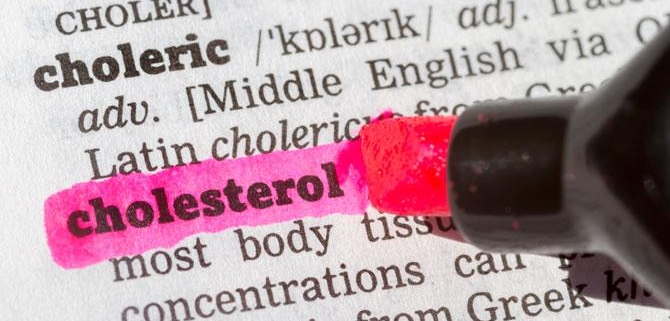How Long Does It Take to Lower Cholesterol?
Overview
Your cholesterol levels are directly tied to your heart health, which is why it’s so important to make sure they’re in a healthy range. The Centers for Disease Control and Prevention (CDC)Trusted Source, reports that 78 million adults in the United States had high levels of low-density lipoprotein (LDL), or “bad” cholesterol, in 2012. The organization also states that people with high LDL cholesterol are at a much higher risk of heart disease.
Dr. Nieca Goldberg, medical director of the Joan H. Tisch Center for Women’s Health at the NYU Langone Medical Center, says it can take between three to six months to see lower LDL numbers through just diet and exercise, noting that it takes longer to see changes in women than men.
Read on for more information on how to lower your LDL levels.
What is cholesterol?
Cholesterol is a waxy, fatty substance that’s found in your body and that travels through your bloodstream. Your body needs a certain amount to function properly, but it produces all it needs. Cholesterol travels through your body with lipoproteins, which are soluble proteins that transport fats through the body.
LDL, the “bad” cholesterol, carries cholesterol to your body’s tissues and blood vessels. If your body has too much LDL, it will deposit the excess along the walls of your blood vessels, putting you at risk of a heart attack and stroke.
High-density lipoprotein (HDL), also called “good” cholesterol, takes excess cholesterol from your tissues and blood vessels back to your liver, where it’s removed from your body. HDL helps protect you from heart disease. So unlike LDL cholesterol, the higher the levels of HDL, the better.
Triglycerides are another type of fat that can build up in your body. A high level of triglycerides combined with a low level of HDL cholesterol also raises your risk of heart disease and diabetes.
How high is too high?
These levels can help determine which treatment options are best, along with helping to establish your overall risk of heart disease.
Total cholesterol
Good: 199 milligrams per deciliter (mg/dL) or lower
Borderline: 200 to 239 mg/dL
High: 240 mg/dL or higher
LDL
Good: 100 mg/dL or lower
Borderline: 130 to 159 mg/dL
High: 160 mg/dL or higher
HDL
Good: 60 mg/dL or higher
Low: 39 mg/dL or lower
Triglycerides
Good: 149 mg/dL or lower
Borderline: 150 to 199 mg/dL
High: 200 mg/dL or higher
You can have high cholesterol and not know it. That’s why it’s important to be checked regularly. The American Heart Association recommends that all adults have their cholesterol checked every four to six years starting at age 20. More frequent checks may be needed based on treatment plans and other risk factors.
Lifestyle changes
Making healthy lifestyle changes is one of the most important ways to lower your cholesterol and improve overall health.
According to Dr. Eugenia Gianos, cardiologist at NYU Langone Medical Center, you can lower your cholesterol levels by up to 20 percent through dietary and lifestyle changes alone, but that can vary depending on the person. “We give patients three months to see what effects occur with dietary changes,” she says.
Diet
In order to help lower LDL cholesterol, reduce saturated fat in your diet and increase dietary fiber. Saturated fats increase your body’s production of LDL cholesterol. Dr. Gianos says to cut saturated fat to less than 10 grams per day, and to eat 30 grams of fiber per day, 10 grams of which should be insoluble fiber.
Both doctors say that plant-based diets can help lower cholesterol and improve your overall heart and body health. They recommend the DASH diet and the Mediterranean diet, because both emphasize high fiber levels and healthy fats.
The DASH diet includes:
- plenty of fruits, vegetables, and whole grains
- nonfat or low-fat dairy
- lean proteins (such as fish, soy, poultry, beans)
- healthy fats (for example, nuts, seeds, vegetable oils)
- limited salt, sugar, processed foods, red meats
The Mediterranean diet includes:
- plenty of fruits, vegetables, and whole grains
- healthy fats like nuts and olive oil instead of unhealthy fats like butter
- limited salt (substituting herbs and spices instead)
- mainly fish and poultry for protein, with red meat in moderation (a few times a month)
Dr. Goldberg explains that she looks at the patient as an individual and tries to figure out why their cholesterol is high. She says a lot of her patients are busy and often eat quick meals out. In that case, Dr. Goldberg recommends that people focus on eliminating processed foods and refined sugars.
Exercise
Not being physically active can contribute to higher LDL levels and lower HDL levels. Aerobic exercise helps your body raise its HDL levels, which is important for protecting you against heart disease.
“Exercise is key. Exercise has cardiovascular benefits in addition to weight loss benefits. For weight loss, we recommend 60 minutes of moderate cardio per day,” says Dr. Gianos.
Activities like brisk walking, bicycling, dancing, gardening, swimming, jogging, and aerobics will all give you cardio benefits.
Looking forward
“If you’re going to use lifestyle to lower your cholesterol, you have to do it regularly. You can’t just do it for a few months and then quit,” says Dr. Goldberg. She also points out: “Some people are genetically programmed to make more cholesterol than others. The diet and exercise may not be enough for these people based on the level of their cholesterol and global risk for heart disease.”
Both Dr. Gianos and Dr. Goldberg agree that while some people do need medication, it’s not a substitute for healthy lifestyle changes. The two elements work together to protect you.

 no
no
 no
no